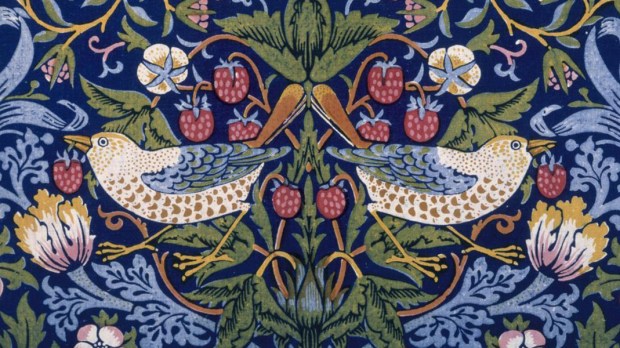When I first encountered “The Strawberry Thief,” a popular design for textiles, I was enchanted. This was many years ago when we had just moved into a new house. It was a historic brick home with original woodwork and a stained glass window at the landing of the stairs, the type of house I’d always wanted to live in. As we unpacked the moving truck, I realized we didn’t have enough furniture to fill the new, larger space, and that the furniture we did have was all cheap, ugly, and falling apart. I wanted our furnishings to match the beauty of our home, and became obsessed with interior decorating. That’s when I discovered the wallpaper and fabric designs of William Morris — the most well-known among them is The Strawberry Thief — but there are many more and they are all amazing.
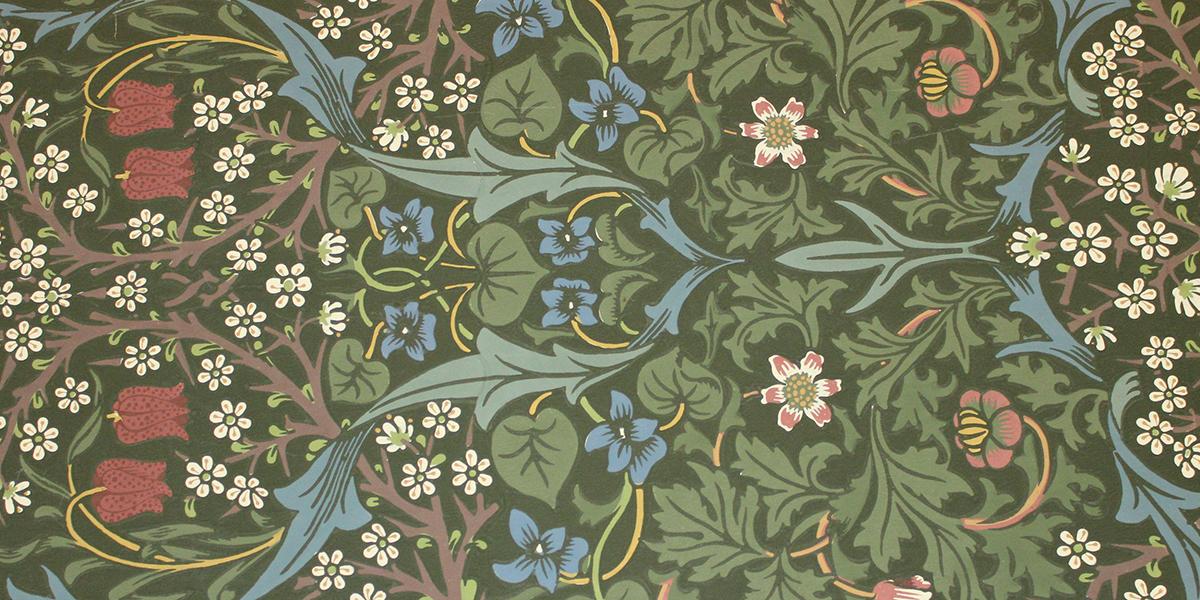
My wife and I married when we were both 20 years old. Our first apartment was 400 square feet of used furniture scrounged from the thrift store. The place was hideous, full of mismatched chairs and bookshelves that were slowly collapsing into themselves. We were young and naive and we loved it.
The first house we owned was the first place we could find that looked halfway decent – it was still very much a fixer-upper — and was actually affordable. We decorated it as nicely as possible, but still relied on hand-me-down furniture and estate sale bargains. I began to slowly collect old art prints and frame them myself. I scavenged eBay for old oriental rugs. I refinished a scuffed-up dining room table and made it shine. I tore down a section of the chimney brick and attached a new mantle to update the fireplace. Looking back, I don’t think I would have the energy to tackle that house again.
I wonder, what is this impulse we all share to make our houses beautiful? Why do we put so much effort and care into something as simple as the fabric on a chair or the color of a wall?
William Morris, now a famous name in the history of interior design, began the same way I did. He did it all himself. In 1860, he built a house he named The Red House and invited all his friends over to decorate it by hand. One of those friends, Georgie Burne-Jones, talks about visiting for the weekend, first arriving at, “Abbey Wood Station, a country place in those days, where a thin fresh air full of sweet smells met us as we walked down the platform …”
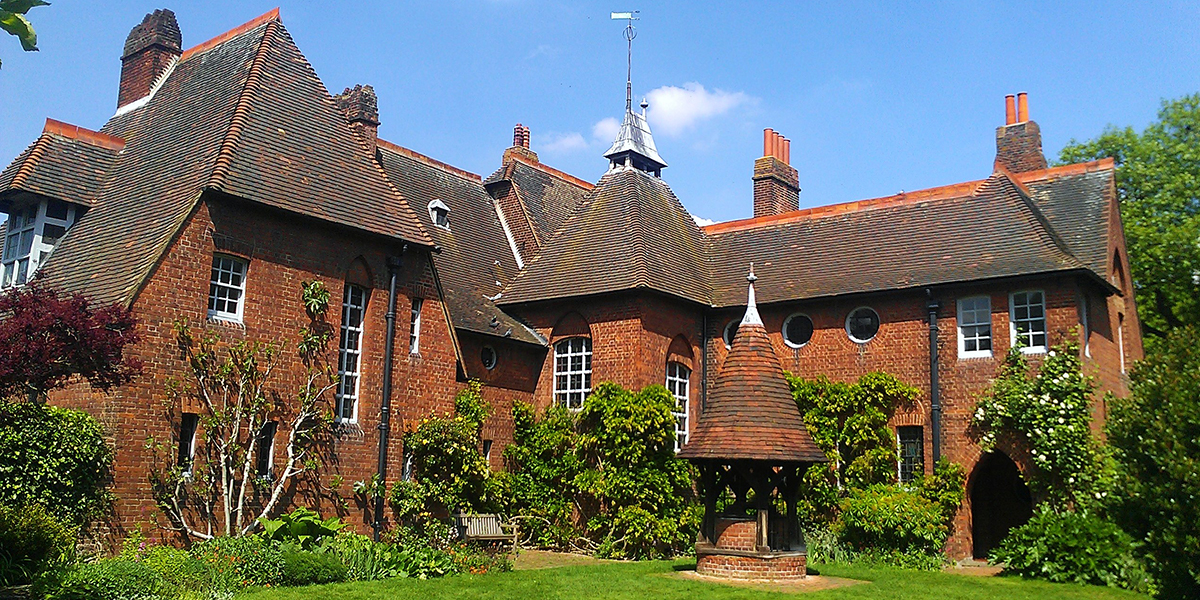
They would all pile into a wagon for a fun weekend of decorating and garden games. They painted medieval stories onto the walls, hand-embroidered textiles, built custom chairs, and created all sorts of intricate patterns for wallpaper and fabric. Morris believed that every person deserves a beautiful home. Moreover, he believed that beautiful things don’t have to be prohibitively expensive, that people could make beautiful things all on their own. The movement he began is now known as the Arts and Crafts movement.
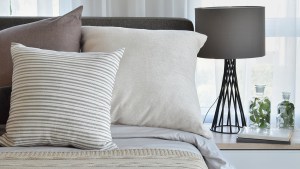
Read more:
Why you should prioritize organizing and decorating your bedroom
Morris says, “I do not want art for a few; any more than education for a few; or freedom for a few …” To him, the impulse we have to make our homes nice is a response to a fundamental human desire, an inner response to beauty that is as important as any other daily concern we might have. Beauty is not only for the rich, or for museums – it is for everyone. He says, “Have nothing in your house that you do not know to be useful or believe to be beautiful.”
Much of our lives is spent inside of our homes, and life is meant to be beautiful. To reflect this, a home, too, can be beautiful. It should be beautiful. Morris set himself to creating tea sets, journals, lamps, vases … all with an eye towards beauty. His main theme was nature. He loved bringing the beauty of creation inside, and many of his designs involve flowers, birds, and gracefully curving leaves and vines. My goal for my home is to sit down to dinner with my family, surrounded by beauty, and be reminded that my family is beautiful, the gift of life is beautiful.
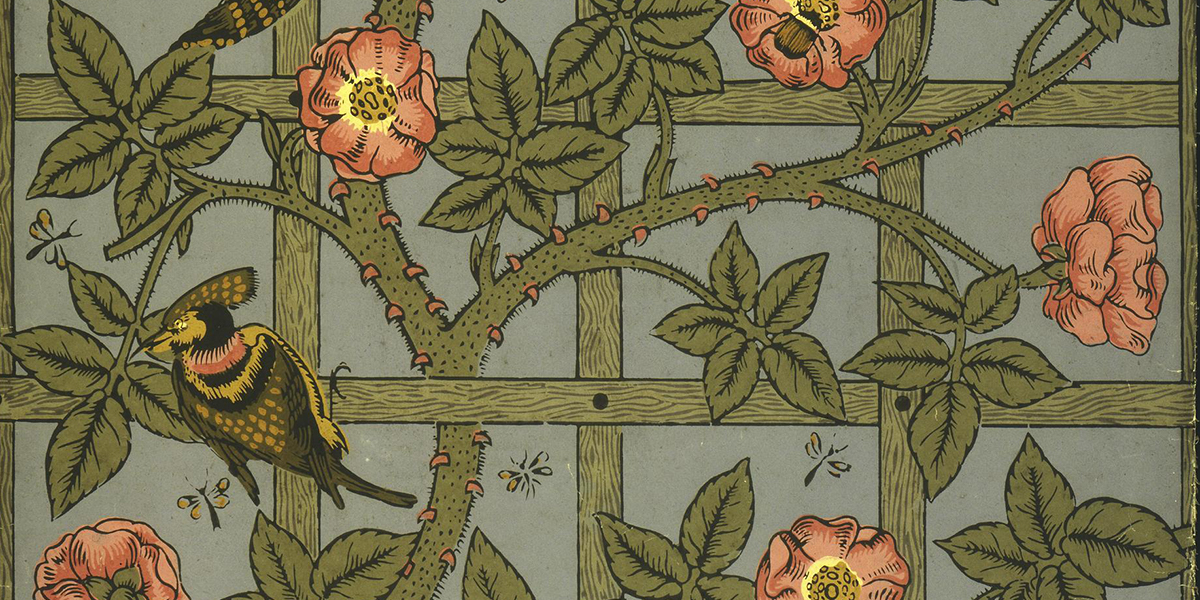
In our new home, we still don’t spend much money on interior decorating. I think Morris would be proud. Instead, I haunt antique shops for treasures. I’ve set my children to creating decorations such as little botanical watercolors that I then frame and put on the wall. We bring flowers in from the garden and enjoy the freshness they bring to the room. It doesn’t take much to improve a space, and if we can only manage little touches of beauty here and there, there’s a sense of pride and satisfaction in even our smallest efforts, especially when we have created the beauty ourselves.
Here is what William Morris says; “With the arrogance of youth, I determined to do no less than to transform the world with Beauty. If I have succeeded in some small way, if only in one small corner of the world, amongst the men and women I love, then I shall count myself blessed, and blessed, and blessed, and the work goes on.”

Read more:
How the beauty of creation can lead us closer to God
